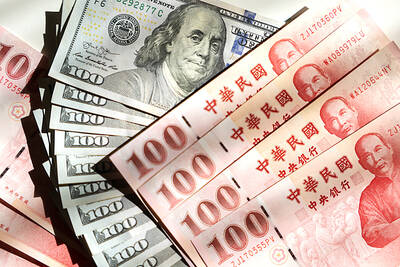Taiwan’s HTC Corp (宏達電) has learned its lesson following the quality problems it had with its flagship smartphone last year, and plans to avoid making the same errors with its new HTC One model, Bank of America Merrill Lynch said.
In a note to clients on Thursday, the bank said that HTC is launching the HTC One in phases to manage the supply of components, with the US, UK, Taiwan and Germany in the first phase this month, with the second phase starting in April.
“[HTC’s] management is aware of last year’s bottleneck in component supplies and said it has learned its lesson,” Merrill Lynch analyst Robert Cheng (鄭勝榮) said in the note, referring to the quality issues surrounding the HTC One X flagship model.
After its unveiling in February last year, the HTC One X appeared promising based on reviews by tech blogs and HTC’s operator partners.
However, within the first few weeks of the product hitting the market there were a large number of customer complaints about the phone’s quality, such as a yellow spot in the phone’s display, extremely short battery life, overheating and software instability.
Separately, Cheng said that investors have expressed concerns over the new HTC One’s 4 megapixel camera, as many handsets offered by the firm’s rivals have cameras of between 8 and 13 megapixels.
He said HTC’s management have stressed that consumer education is the key to turning around the perception that better photos require more pixels.
Given the high demand from mobile carriers for the HTC One after last month’s launch, Cheng said the majority of HTC’s shipments this month would be of the new handset and that its sales would be reflected in data for the next two months.
Meanwhile, Ben Ho (何永生), chief marketing officer of HTC, said on Friday that HTC is targeting “techmaniacs,” (tech-savvy consumers), who are interested in new features and designs.
The firm will focus on Web sites, social networking sites, blogs and other digital media to strengthen its communications with the estimated 1.1 billion “techmaniacs” around the world, Ho said.

MARKET LEADERSHIP: Investors are flocking to Nvidia, drawn by the company’s long-term fundamntals, dominant position in the AI sector, and pricing and margin power Two years after Nvidia Corp made history by becoming the first chipmaker to achieve a US$1 trillion market capitalization, an even more remarkable milestone is within its grasp: becoming the first company to reach US$4 trillion. After the emergence of China’s DeepSeek (深度求索) sent the stock plunging earlier this year and stoked concerns that outlays on artificial intelligence (AI) infrastructure were set to slow, Nvidia shares have rallied back to a record. The company’s biggest customers remain full steam ahead on spending, much of which is flowing to its computing systems. Microsoft Corp, Meta Platforms Inc, Amazon.com Inc and Alphabet Inc are

Luxury fashion powerhouse Prada SpA has acknowledged the ancient Indian roots of its new sandal design after the debut of the open-toe footwear sparked a furor among Indian artisans and politicians thousands of miles from the catwalk in Italy. Images from Prada’s fashion show in Milan last weekend showed models wearing leather sandals with a braided design that resembled handmade Kolhapuri slippers with designs dating back to the 12th century. A wave of criticism in the media and from lawmakers followed over the Italian brand’s lack of public acknowledgement of the Indian sandal design, which is named after a city in the

The US overtaking China as Taiwan’s top export destination could boost industrial development and wage growth, given the US is a high-income economy, an economist said yesterday. However, Taiwan still needs to diversify its export markets due to the unpredictability of US President Donald Trump’s administration, said Chiou Jiunn-rong (邱俊榮), an economics professor at National Central University. Taiwan’s exports soared to a record US$51.74 billion last month, driven by strong demand for artificial intelligence (AI) products and continued orders, with information and communication technology (ICT) and audio/video products leading all sectors. The US reclaimed its position as Taiwan’s top export market, accounting for

INVESTOR RESILIENCE? An analyst said that despite near-term pressures, foreign investors tend to view NT dollar strength as a positive signal for valuation multiples Morgan Stanley has flagged a potential 10 percent revenue decline for Taiwan’s tech hardware sector this year, as a sharp appreciation of the New Taiwan dollar begins to dent the earnings power of major exporters. In what appears to be the first such warning from a major foreign brokerage, the US investment bank said the currency’s strength — fueled by foreign capital inflows and expectations of US interest rate cuts — is compressing profit margins for manufacturers with heavy exposure to US dollar-denominated revenues. The local currency has surged about 10 percent against the greenback over the past quarter and yesterday breached